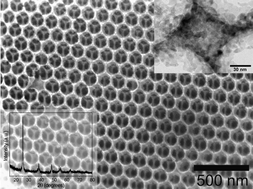Slow photons in the fast lane in chemistry
Abstract
A driving force in the rapidly developing field of photonic crystals has been the photonic bandgap, a range of energies where the propagation of light is completely forbidden. The photonic bandgap allows the design of photonic lattices that localize, guide and bend light at sub-micron length scales, providing opportunities for the creation of miniature optical devices and integrated optical circuits to help drive the revolution in photonics. A less well known attribute of photonic crystals is their theoretical ability to slow light to a velocity of zero. This phenomenon can be achieved at the high and low energy edges of photonic stopgaps where the photonic bands are flat and light exists as a standing wave commensurate with the photonic lattice and travels at a group velocity of zero, referred to as “slow


 Please wait while we load your content...
Please wait while we load your content...